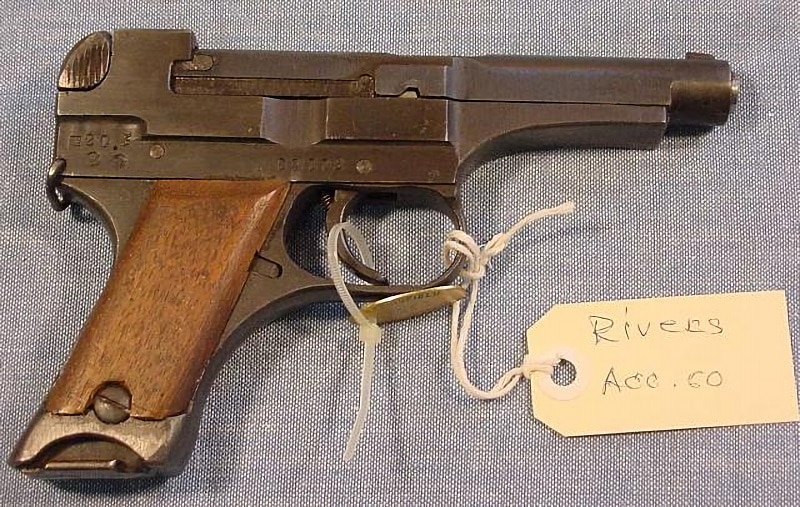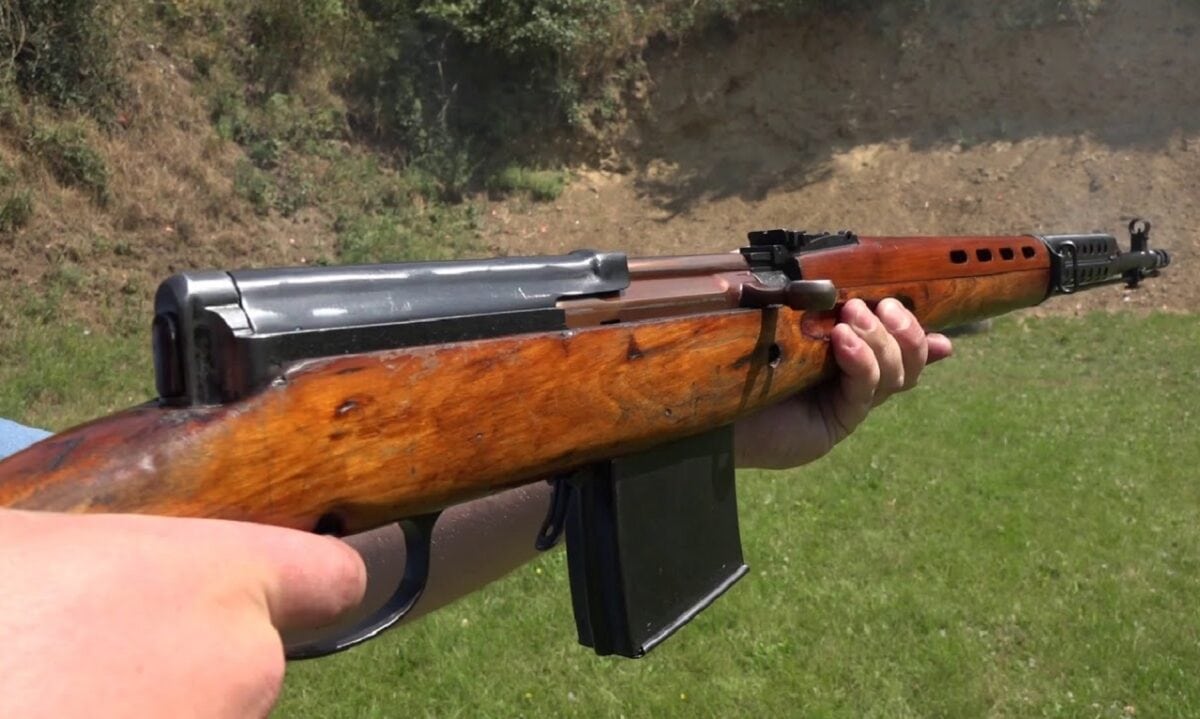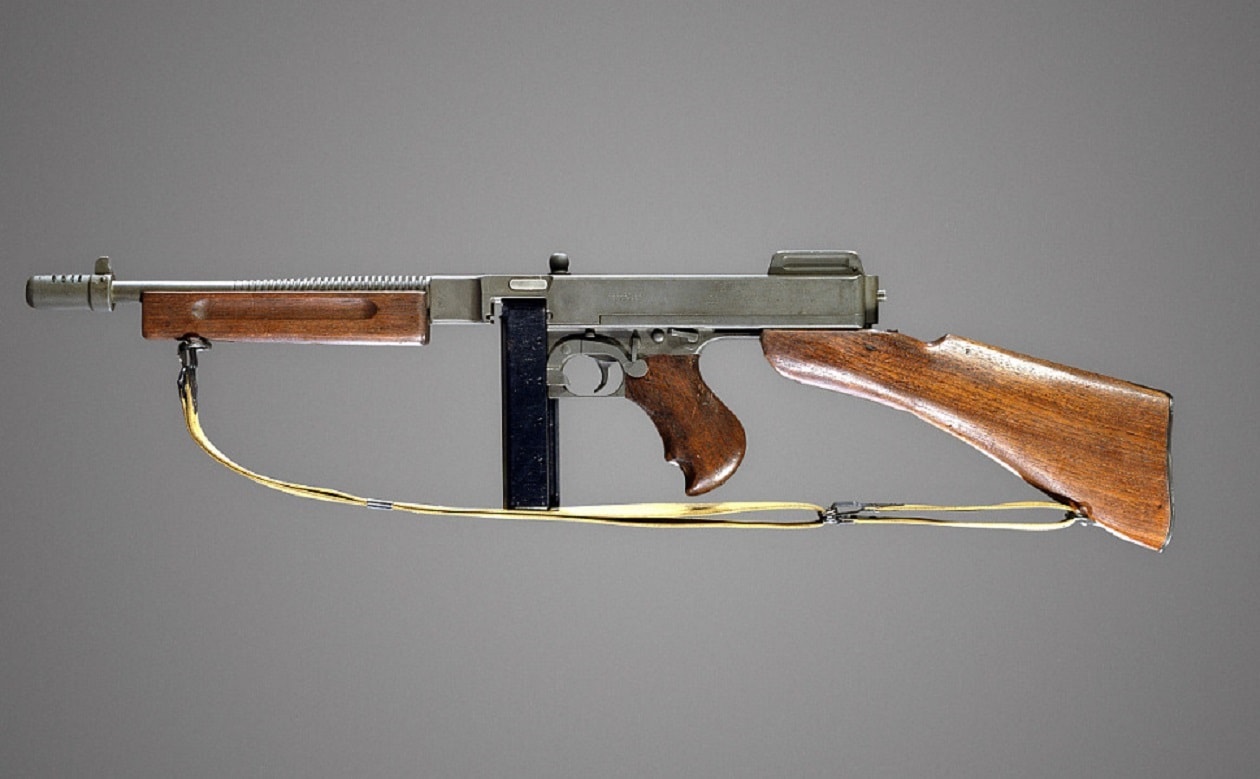Explained: The 5 Worst Firearms of World War II – Any list of the best firearms for a particular conflict is often based on the positive attributes of the weapons, and how they performed in combat, but also many particular details such as whether some of the features were innovative and contributed to future gun design. The FG-42 automatic rifles employed by the Germans in World War II were far from perfect, but their operation was later used with the American M60 (along with some attributes taken from the MG-42).
There are similar considerations when determining the absolute worst small arms. This could include how a particular firearm performed, but also whether it was essentially a dead-end on the evolutionary tree of small arms design.
With those criteria, here is the shortlist of some of the guns that were the very best at being bad.
5 Worst Firearms of World War II: Type 94 (Japan)
The Type 94 was not the only Japanese pistol designed by Kijiro Nambu, but it was truly his worst handgun design. It was meant to be smaller and simpler to produce than the iconic Type 14, yet it still utilized the same 8mm rounds. It was a weapon that had a serious kick, wasn’t all that accurate, and was difficult to maintain.
More importantly, it had an extremely serious design flaw, which allowed it to be accidentally discharged by pressing the exposed trigger bar on the left-hand side of the receiver. Some would argue that the safety should always be on until the gun is ready to be fired, but it seems to be a potentially deadly flaw nonetheless.

Japan World War II Type 94. Image: Creative Commons.
Despite those issues, some 72,000 Type 94 pistols were made by the end of the war, and quality diminished greatly during production over the later stages of the war, and many of these cruder versions are the ones that were brought home in large numbers by returning American GIs, adding to the mythos of the poor quality of the Japanese Type 94 pistol. Among collectors, it has earned the reputation of “not to shoot, but to ridicule.”
5 Worst Firearms of World War II: Type 11 Machine Gun (Japan)
Modeled after the French Hotchkiss, the Japanese Type 11 was an air-cooled, gas-operated light machine gun that was also designed by Nambu – a man who was nearly as prolific a weapons maker as the American John Browning. However, unlike Browning, many of Nambu’s firearms could be used as concrete evidence that perhaps he shouldn’t have been an arms designer.
The Type 11 is one of the truly oddest guns ever employed in combat.
Adopted by the Imperial Japanese Army in 1922, the Type 11 was actually developed to fire the same 6.5x50mm Arisaka cartridges as the Type 38 infantry rifle to simplify ordnance issues. Moreover, instead of ammo belts or even feed 30-round strips, the latter of which was used in the Hotchkiss, the Type 11 featured a detachable hopper magazine that was meant to accommodate five-round rifle stripper clips. In theory, that could allow the weapon to be constantly fed with ammunition while firing. The five-round clips could be stacked laying flat above the receiver, which eased loading.
This probably seemed like an excellent idea in test situations, but in combat, it was another story entirely.
The first issue was that the weapon’s bolt moved linearly back and forth with no special leverage to aid extraction. This type of design proved to have difficulties in field conditions, so to address this issue, Nambu placed an automatic oiler system that could lubricate the cartridges prior to chambering. Though fine in normal range conditions, oiled cartridges tend to attract dust and dirt, leading to another source of jamming problems on the battlefield.
Likewise, while reloading the hopper from a fixed position was easy, it was nearly impossible to reload quickly whilst on the move. Another serious issue with this feed system was that the weight of the rifle cartridges unbalanced the weapon when it was fully loaded. Nambu compensated for this by having the buttstock bent to the right – which led to the Chinese referring to the Type 11 as “bent buttstock.”
The final issue was that the 6.5mm ammunition used in the Type 38 rifle – which had a barrel a full foot longer – produced an excessive flash. As a result a new 6.5x50mm Arisaka “genso” round was produced, which essentially negated the ability to keep the Type 11 fed with rifle ammunition! Despite all these problems, the Type 11 remained in use until 1941.
Today it is remembered for being the absolute worst machine ever – and unlike the French Chauchat (which has an unwarranted bad reputation), this one has no redeeming qualities.
5 Worst Firearms of World War II: Breda 37 Machine Gun (Italy)
The Mitragliatrice Breda calibro 8 modello 37 – commonly known simply as the Breda 37 – might have been a very good weapon for use in the trenches of the First World War. However by the time it was introduced in 1937 it was clearly an antiquated design that proved ill-suited to modern combat.
The first issue was that it was chambered for the heavy 8x59mmRB Breda cartridge, which wasn’t used in any other infantry weapon. This was a common issue with the Italian Army at the time, and it meant the machine gun crews had to have unique supplies of ammunition – whereas most nations of the era utilized the same rounds for the main battle rifles and primary machine guns. Moreover, instead of being fed from ammunition belts or changeable magazines, the Breda 37 was fed by 20-round trays of cartridges similar to those employed on the French Hotchkiss machine guns that were introduced prior to the First World War. What was also unique was that the spent casings remained on the stripper clip, which meant those had to be manually removed before the clips could be reloaded.
The final issue was with its weight. Unlike the British Bren Gun or Germany’s general purpose MG34, which could be easily used in an attack, the Breda 37 was mounted on a heavy tripod that made it among the heaviest machine guns employed during the Second World War. While good in a defensive position it couldn’t be easily employed in an advance. It was simply a generation too late for the more mobile combat of the Second World War.
5 Worst Firearms of World War II: SVT-38 Semi-Automatic Rifle (Soviet Union)
Soviet arms designer Fedor Tokarev had made a name for himself as the designer of the TT-30 and TT-33 self-loading (semi-automatic) pistols, which were essentially based on John Browning’s Colt M1911 .45 pistol. Those Soviet handguns proved to be among the very best of the Second World War, yet Tokarev’s next firearm design was far from as effective.
The SVT-38, which was chambered in the 7.62x54mmR cartridge that was used in the Russian/Soviet Mosin-Nagant bolt action rifle, utilized a gas-operated action along with a gas cylinder cup, which made it rather complex by Soviet standards. Before the weapon could be refined, the new rifle was rushed into service with the Red Army during the Winter War with Finland (1939-40).

SVT Rifle. Image Credit: Creative Commons.

That was a huge mistake as it wasn’t ready for front-line service.
In the field, soldiers found the gun too long, too cumbersome, far too difficult to maintain. Worst of all, it had a removable box magazine that fell out at inopportune times. Another concern for soldiers was that the SVT-38 was not well suited to handle corrosively-primed ammunition. That required the weapon to be cleaned frequently, something that the Mosin-Nagant didn’t need, and not something soldiers wanted to do in the bitterly cold conditions. Production of the SVT-38 ceased in 1940.
Instead of ending up as a victim of Stalin’s purges, Tokarev was given a chance to refine the design, resulting in the SVT-40 – a rifle that has earned respect from collectors. It has also been widely compared to the American M1 Garand and German G43, but the Soviet design remains the crudest of the three and even the refined SVT-40 is no Garand. Due to the complexity of production of the SVT-40, by the end of the war, the Soviets had reverted to manufacturing more of the time-tested Mosin-Nagant instead.
5 Worst Firearms of World War II: MAS-38 Submachine Gun (France)
The MAS-38 rarely makes such “worst” lists, largely only because it is among the most overlooked and forgotten weapons of the Second World War. It was also another submachine gun that likely seemed perfect in concept but proved less so when employed in combat.
With war on the horizon in the 1930s, the French military looked to the lessons it learned in the First World War with its Lebel and Berthier main battle rifles. The length of those weapons – among the longest employed in the conflict – had proved problematic in the trenches, as did the slow rate of fire. As a result, a new rifle was produced. It was the MAS-36, which was far shorter and thus better suited to such a type of conflict. The MAS-36 wasn’t perfect, but it got the job done.
Just two years later, the French went on to develop the MAS-38, a compact submachine gun that was also well-suited to trench warfare. At just 24 inches and with a barrel that was a scant 8.7 inches, it weighed just 6.5 pounds. It had a simple blowback action but could fire only on full auto from an open bolt. It also featured quite an unusual design in which the barrel and bolt travel were not parallel. As a result, the bolt handle was non-reciprocating and stayed in the rearward position once the gun was charged. Yet, even with its lightweight, the mild recoil reportedly made it easy to control.
However, it was also machined from solid steel and had only a few stamped parts, resulting in a high production cost. It required skilled machinists to mill out the parts, which also slowed the manufacturing process. Clearly, some of the lessons of the First World War were not taken to heart in 1938. Moreover, while reliable, the MAS-38 submachine gun was complex to maintain and required special tools – which weren’t issued to every soldier who carried the weapon. It remains unclear if that was meant to be addressed at a later date.
The MAS-38 was also unique in that it was chambered for the 7.65x20mm Longue cartridge, which was also used in the newly introduced Model 1935A sidearm that was developed for the French Army. The choice of ammunition ensured standardization among the new French small arms, but the round didn’t have the stopping power of the German ammunition. Nor could captured ammunition be used, but likely that was a secondary consideration – and it also meant Germany couldn’t employ captured French ammo either. The bigger issue was that due to the power of the cartridge, the MAS-38 had a very limited range, but we must remember it was designed for use in trench fighting that never occurred.
The MAS-38 proved largely ineffective during the German Blitz. Captured weapons were pressed into service by the Germans but only issued to rear-guard troops. That was likely due to the lack of ammunition, so it was never carried by any French volunteers in the Waffen SS. However, a few thousand of the guns ended up in the hands of French and later Italian partisans. In fact, it was MAS-38 was that one was reportedly used by Italian partisans to execute Italian dictator Benito Mussolini in Milan at the end of World War II. So while an underperforming weapon, it at least did do something right!
A Senior Editor for 1945, Peter Suciu is a Michigan-based writer who has contributed to more than four dozen magazines, newspapers and websites. He regularly writes about military hardware, firearms history, cybersecurity and international affairs. Peter is also a Contributing Writer for Forbes. You can follow him on Twitter: @PeterSuciu.

